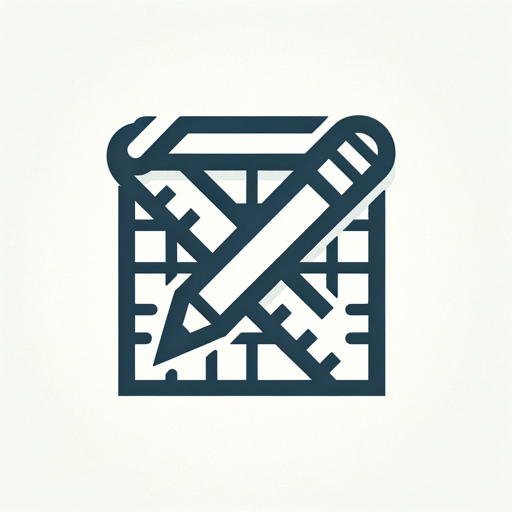FPGA/ASIC Engineer-FPGA/ASIC design and verification tool
AI-powered FPGA and ASIC design tool
Explain the difference between FPGA and ASIC
How to optimize FPGA designs?
Best practices for ASIC development
Troubleshoot common FPGA issues
Related Tools
Load More
Software Architect GPT
Builds new software architecture documents by understanding user requirements and design constraints

FPGA and Verilog Expert
Expert in FPGA workings, Xilinx 7 series, and Verilog HDL

Electronics Hardware Design GPT
Expert in electronics and hardware design, circuit and PCB guidance

RTL GPT
Expert in Hardware Design and Verification

电路分析设计师
Expert in electrical circuit analysis and design, providing detailed explanations.

Hardware Engineering Advisor
Senior hardware developer guiding juniors in computer systems and languages.
20.0 / 5 (200 votes)
Introduction to FPGA/ASIC Engineer
FPGA/ASIC Engineers specialize in designing and implementing custom digital hardware systems, focusing on two main technologies: Field-Programmable Gate Arrays (FPGAs) and Application-Specific Integrated Circuits (ASICs). FPGAs offer flexible, reprogrammable logic devices, whereas ASICs are custom-manufactured for specific applications. The primary role of an FPGA/ASIC engineer involves designing hardware architectures, writing hardware description languages (HDLs) like VHDL or Verilog, and optimizing digital circuits for performance, power, and area. A key task is ensuring that hardware systems work efficiently and reliably under real-world constraints, such as timing, power consumption, and manufacturability. For example, an FPGA engineer may work on rapid prototyping of a communication system that requires adaptability, allowing for fast updates to the hardware design. In contrast, an ASIC engineer might focus on developing a highly optimized chip for a specific function, such as a processor core, ensuring minimal power consumption and high-speed operation. The FPGA/ASIC engineer's role is critical in industries like telecommunications, automotive systems, aerospace, and consumer electronics, where hardware performance and efficiency are paramount.

Main Functions of FPGA/ASIC Engineer
Design and Implementation of Digital Logic
Example
Creating complex digital systems like signal processing algorithms in FPGA using Verilog.
Scenario
In telecommunications, FPGA/ASIC engineers implement fast digital filters for signal processing to ensure real-time communication without delays.
Hardware Optimization (Power, Performance, and Area)
Example
Optimizing an ASIC for a mobile device where power consumption is critical.
Scenario
An ASIC engineer optimizes a processor to consume the least amount of power while ensuring maximum performance for a mobile phone application.
Verification and Validation of Hardware Designs
Example
Performing Clock Domain Crossing (CDC) verification using tools like Questa CDC for FPGA and ASIC designs.
Scenario
For a 28nm ASIC design, the engineer verifies CDC errors at the gate level to prevent glitches caused by metastability during synthesis【9†source】【10†source】.
Ideal Users of FPGA/ASIC Engineer Services
Digital Hardware Designers
Engineers involved in developing custom digital systems, such as signal processing units, require expert assistance to design, optimize, and verify complex hardware systems. They benefit from FPGA/ASIC engineers by leveraging their ability to translate algorithms into optimized hardware architectures.
System Verification Engineers
Verification engineers responsible for ensuring the functionality and correctness of hardware systems. They rely on FPGA/ASIC engineers to validate designs through advanced verification techniques like CDC analysis and power-aware simulation, ensuring designs are free of metastability issues and timing errors.

How to Use FPGA/ASIC Engineer
Visit aichatonline.org
For a free trial without needing a login or ChatGPT Plus subscription, start by visiting aichatonline.org. This platform provides open access to the FPGA/ASIC Engineer tool.
Explore the available features
Familiarize yourself with FPGA/ASIC-specific functions such as design verification, debugging, and optimization. The tool supports languages like Verilog and VHDL, allowing for detailed hardware design assistance.
Select the right design module
Depending on your use case, choose between ASIC or FPGA design modes. This includes options for RTL synthesis, timing analysis, and clock domain crossing verification.
Integrate design tools
Integrate popular design and simulation tools like Questa, ModelSim, and Synopsys. This allows for seamless analysis of digital designs, including verification for gate-level CDC issues and power optimization.
Run and troubleshoot designs
Use built-in diagnostics for common FPGA/ASIC issues, including timing constraints, RTL, or gate-level logic verification. Utilize debugging tips, design optimization, and best practices for first-pass silicon success.
Try other advanced and practical GPTs
Custom GPT
Custom AI solutions for every need.

Girlfriend Luna
Your AI-powered virtual companion.

Blood Test Result Analysis for Health Insight
AI-Powered Blood Test Analysis for Better Health

Art Scholar AI
AI-powered insights for art scholars.

Fantasy Map Creator
Bring your fantasy world to life with AI.

Buddy
AI-powered assistance for all your needs.

Human Design Explorer
AI-powered personalized Human Design tool

FlowChartGPT
Visualize complex processes with AI.

Market Insight - Crypto Chart Technical Analysis
AI-powered technical analysis for crypto charts

Shield Challenge - v2
AI-Powered Puzzle Challenge for Critical Minds

Kato, Keeper of Secrets
AI-powered secrets, language games, and more.

Funnel Builder Pro
AI-powered funnels for seamless conversion

- Design Verification
- Clock Crossing
- RTL Synthesis
- Power Optimization
- Timing Analysis
Top FPGA/ASIC Engineer Questions
What types of designs does FPGA/ASIC Engineer support?
FPGA/ASIC Engineer supports a wide range of digital logic designs, including RTL-level FPGA projects, ASIC synthesis, and gate-level designs. It also aids in advanced verification such as Clock Domain Crossing (CDC) and supports languages like Verilog, VHDL, and SystemVerilog.
How can I optimize FPGA design using this tool?
You can optimize FPGA designs through automatic timing analysis, power optimization, and design-for-test (DFT) enhancements. FPGA/ASIC Engineer provides real-time feedback on design constraints and pin assignment optimization to ensure efficient resource usage.
What are the prerequisites for using FPGA/ASIC Engineer?
You need basic knowledge of digital design concepts, familiarity with hardware description languages (HDLs) like Verilog or VHDL, and a functional understanding of synthesis, place and route tools, and timing analysis.
Does FPGA/ASIC Engineer support Clock Domain Crossing (CDC) verification?
Yes, FPGA/ASIC Engineer includes advanced CDC verification tools for both RTL and gate-level designs. It helps detect CDC errors introduced during synthesis, which can cause silicon failure, and offers automated approaches to fix these issues.
Can I use FPGA/ASIC Engineer for ASIC design?
Yes, the tool supports ASIC designs from RTL to gate-level synthesis. It includes features for timing verification, DFT, and low-power design, as well as CDC analysis to ensure design integrity across multiple clock domains.